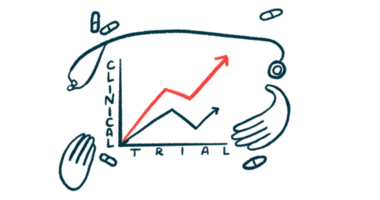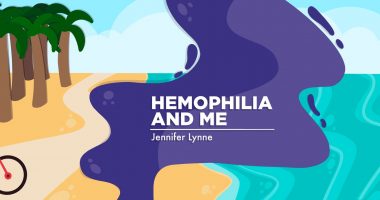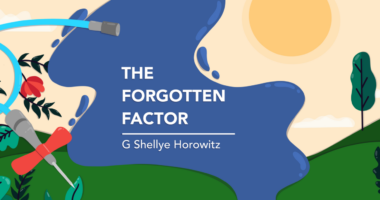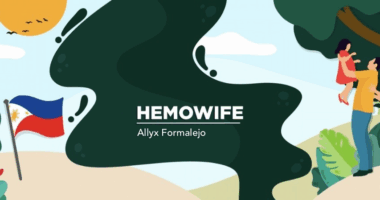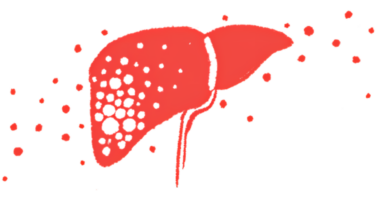Nurturing resilience in children with hemophilia
Last updated July 25, 2025, by Jared Formalejo
Growing up, I was coddled — constantly protected from the world, from pain, and often, from myself. My parents loved me deeply, but understandably, fear sometimes ran the show. Decisions were made for me. I wasn’t encouraged to speak up, take risks, or manage my hemophilia.
They meant well. But today I’m still wrestling with the impact of being so heavily guarded: difficulty with self-care, hesitation to assert myself, and the feeling that independence is something I have to earn rather than a right.
Now, as a parent, I see that same instinct in myself. I have the urge to protect, to prevent, to do everything. But I also know how much that can cost. My goal isn’t just to keep my child safe; it’s to raise someone confident enough to live their own life, with hemophilia as part of the picture, not the whole frame.
By teaching my children resilience, I’m training them to do exactly that.
Resilience comes from nurture, not nature
Resilience isn’t about “bouncing back.” It’s the ability to navigate difficulty, manage stress, and adapt over time. And it doesn’t appear in a void.
One way resilience is shaped is through repeated experiences guided by the adults closest to the child:
- with manageable challenges given at the child’s pace
- in a safe environment where mistakes are allowed
- during dialogues with the child about choices made.
It’s a learning technique called scaffolding. When parents step in too fast or too often, kids miss the chance to learn they’re capable.
Cultivating confidence through competence
A child’s belief that they can handle their condition, what psychologists call self-efficacy, strongly forms motivation and improves mental health. To support self-efficacy in hemophilia care:
- Teach them what’s happening. Use clear, honest language about hemophilia. Don’t oversimplify. Facts create clarity and reduce fear.
- Let them participate. Even small tasks like helping prep an infusion or tracking symptoms give them ownership.
- Guide, don’t fix. When problems come up — “What if your ankle hurts at school?” — ask them what they think they can do. Help them brainstorm.
- Normalize trial and error. Learning doesn’t look perfect. When something doesn’t go well, walk through it together without shame.
The more control kids have over their own care, the more empowered they feel.
Help them create strong connections
Isolation is a real threat for children with chronic conditions. They may feel like they are the only one and that feeling of “otherness” can lead to withdrawal or shame.
Parents can help counter it by providing empathetic social support as a buffer against stress and teaching them to process negative emotions rather than suppress them.
- Practice open communication. Talk about your emotions. Let them see how you manage stress or fear without pretending everything’s fine.
- Validate their feelings. Let them express frustration or sadness without rushing to fix it. “That sounds really hard” goes a long way. The Gottman Institute provides advice on how to approach these conversations.
- Connect them with peers. Whether through camps, local groups, or online communities, being around others with hemophilia makes a difference.
- Teach them to advocate. Don’t always speak on their behalf. Show them how to explain their needs to teachers or friends. Let them try, even if it’s awkward at first.
These help foster social confidence and a sense of belonging — two key ingredients for resilience.
Nurture hope without sugarcoating
Kids living with chronic conditions need honesty, but they also need hope. Not the empty kind, but the kind cultivated through action and intention.
- Practice gratitude. Try simple routines like “What went well today?” at dinner or bedtime. These small habits of gratitude build a lasting resilience.
- Celebrate who they are, not just what they manage. Notice their creativity, kindness, or curiosity. Don’t let their condition be their defining feature.
- Keep your language grounded. Don’t catastrophize. Say, “Let’s take care of this,” instead of, “This is serious.” Your tone shapes their internal voice.
- Recognize progress. This goes back to self-efficacy. Whether it’s a self-infusion or speaking up at school, celebrate effort and growth, not just outcomes.
Joy and confidence aren’t naive. They’re protective.
Model what you want them to learn
Resilient kids often come from homes where resilience is visible. That doesn’t mean being unbreakable. It means being honest, regulated, and willing to take care of yourself, even when it’s hard.
Parents need support, too. Chronic illnesses like hemophilia in a family can be draining. And if you’re constantly depleted, your child will feel that, even if you think you’re hiding it.
Take breaks. Ask for help. Talk to someone. Let your child see that self-care isn’t selfish. It’s responsible. And when they watch you manage hard days with compassion and structure, they’re learning how to do the same.
Reminder: Strength isn’t just about protection
Keeping a child safe is part of the job, especially when they have a chronic condition like hemophilia. But helping them become strong, capable, confident, and in control is just as important.
I didn’t grow up feeling empowered. But that gap showed me exactly what I want to give my child: tools, not just shelter from challenges. Independence, not just oversight. The ability to say, “I’ve got this” and mean it.
That’s the heart of teaching resilience to children. Not doing everything for them, but teaching them how to do things for themselves — and reminding them, over and over, that they can.
Note: Hemophilia News Today is strictly a news and information website about the disease. It does not provide medical advice, diagnosis, or treatment. This content is not intended to be a substitute for professional medical advice, diagnosis, or treatment. Always seek the advice of your physician or another qualified health provider with any questions you may have regarding a medical condition. Never disregard professional medical advice or delay in seeking it because of something you have read on this website. The opinions expressed in this column are not those of Hemophilia News Today or its parent company, Bionews, and are intended to spark discussion about issues pertaining to hemophilia.
Recent Posts

